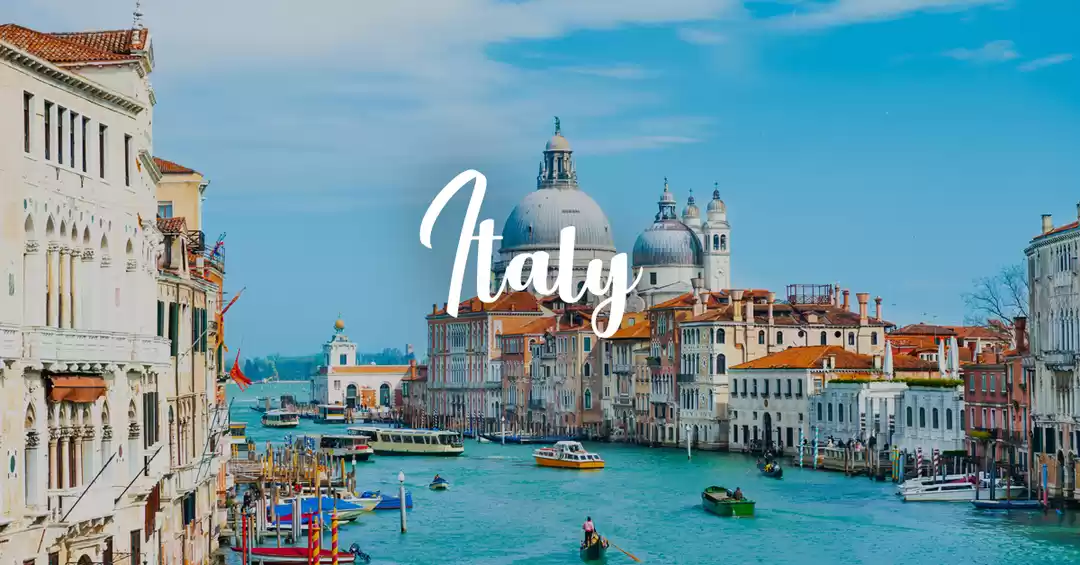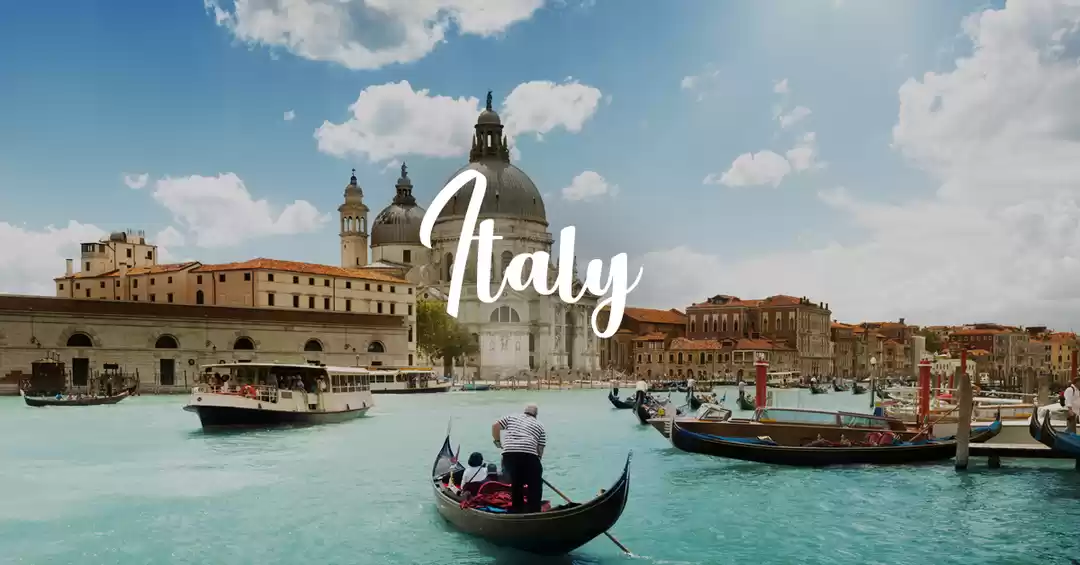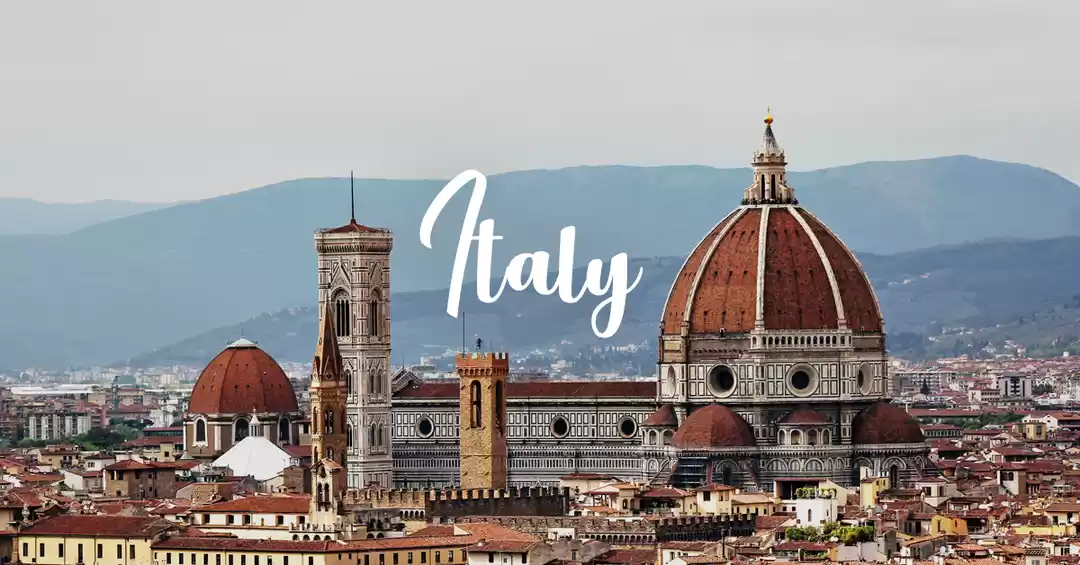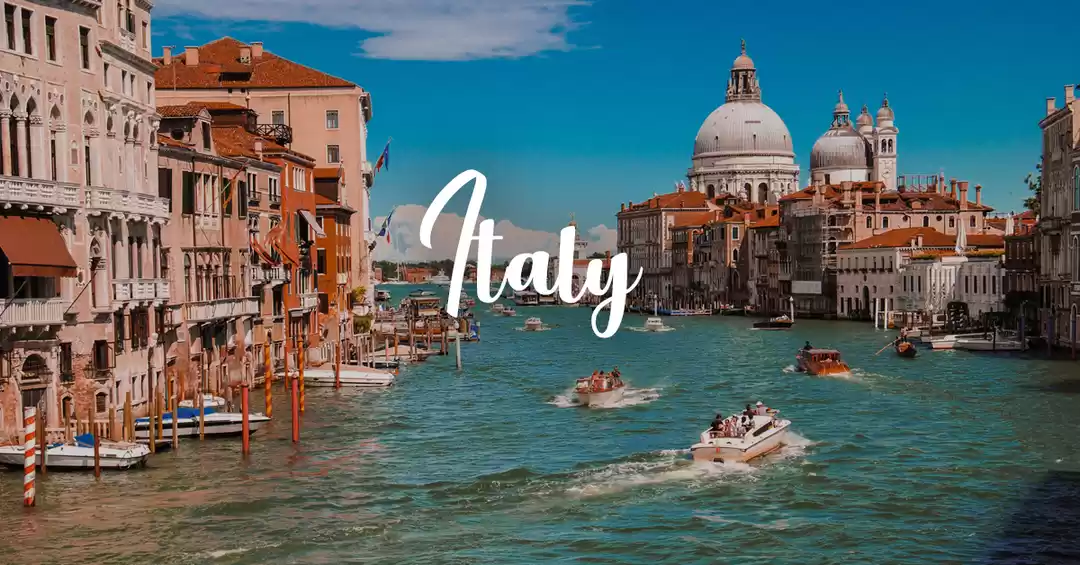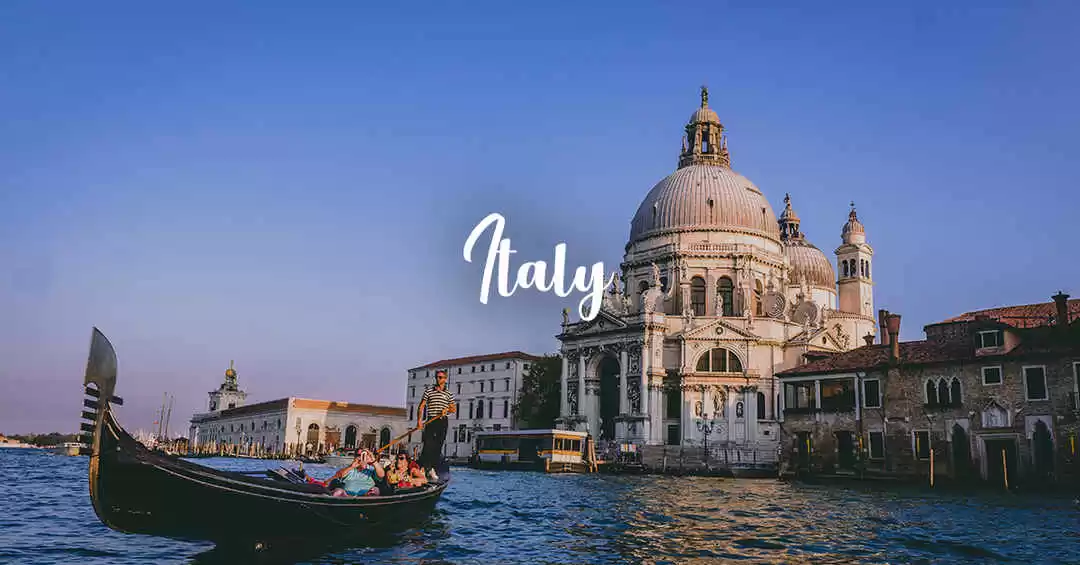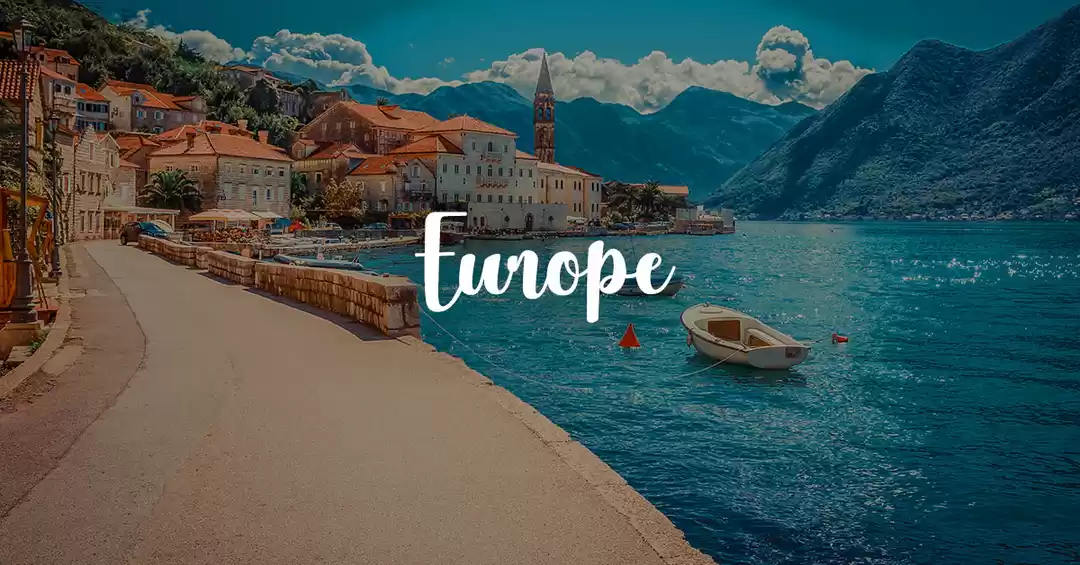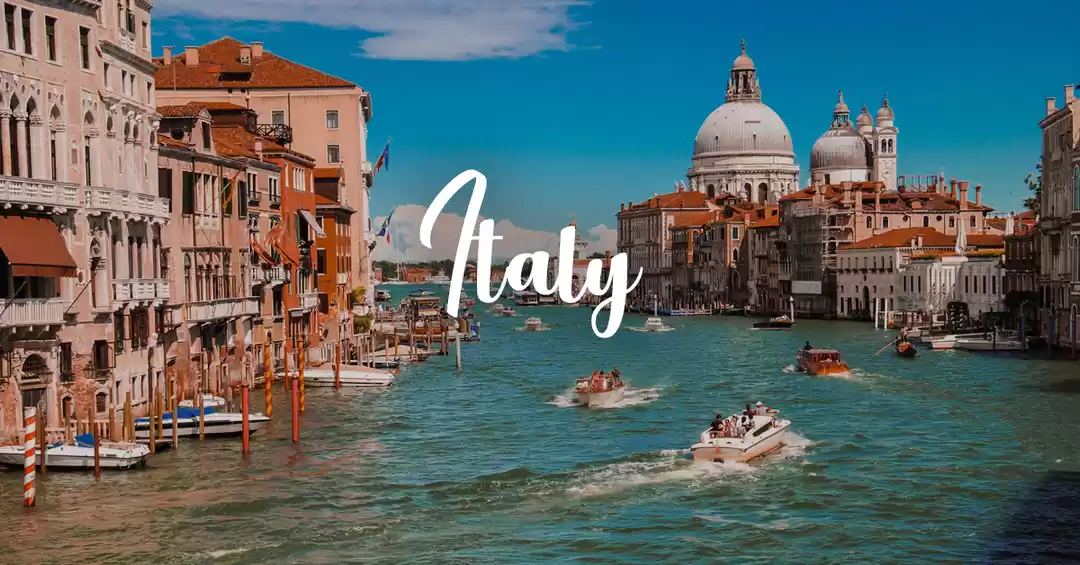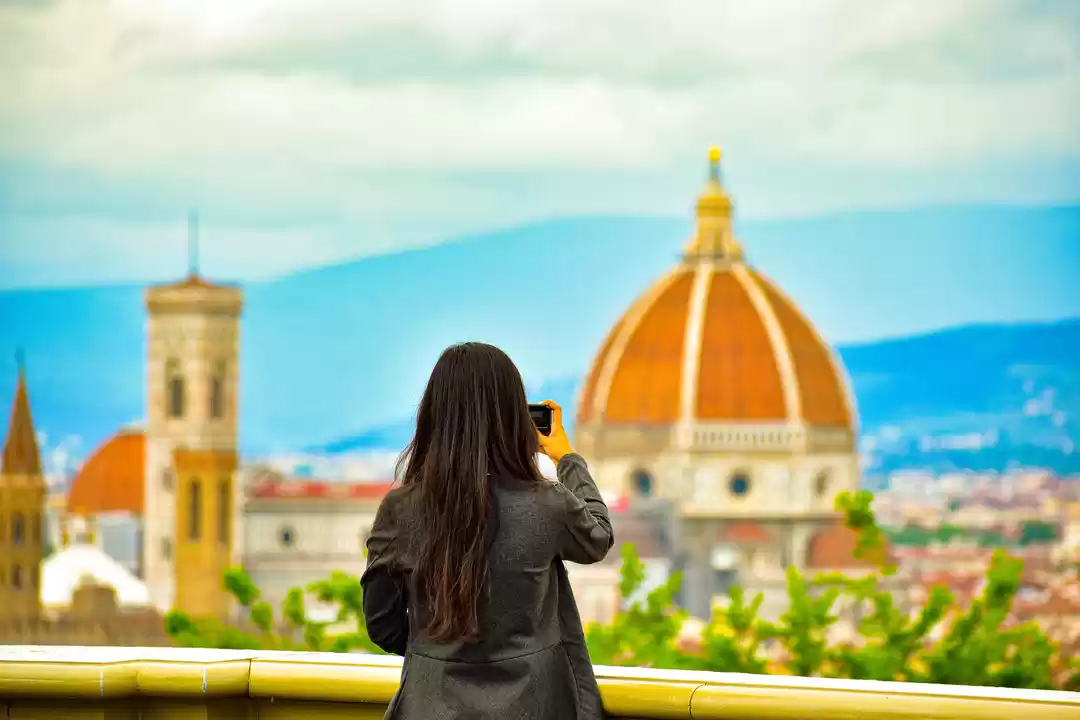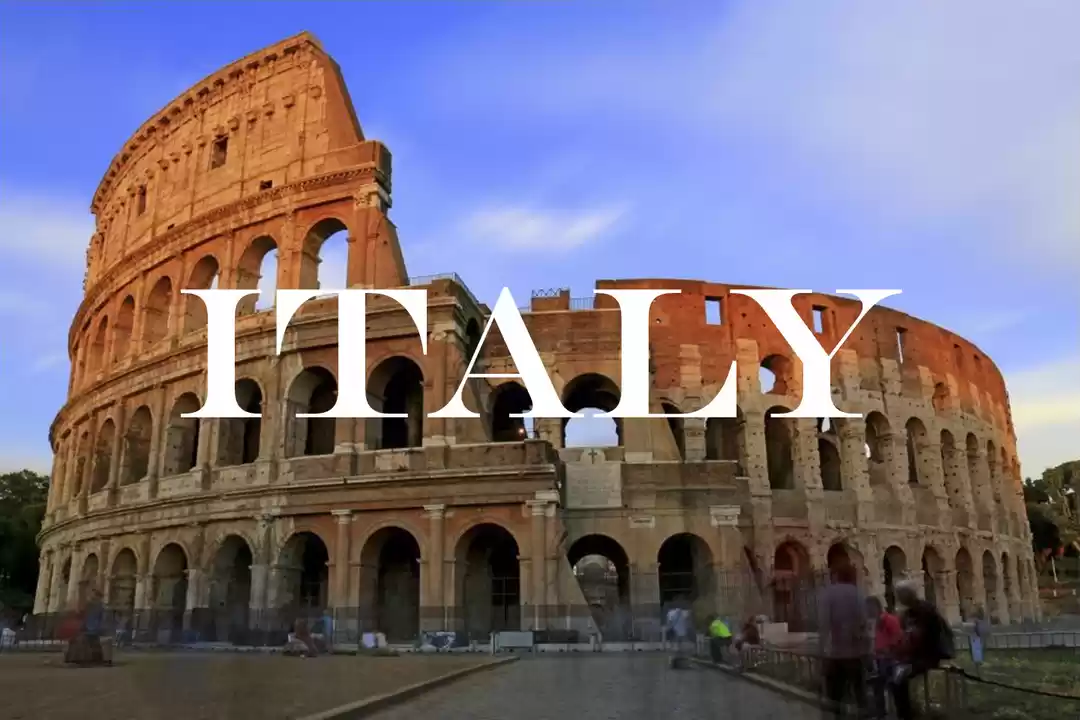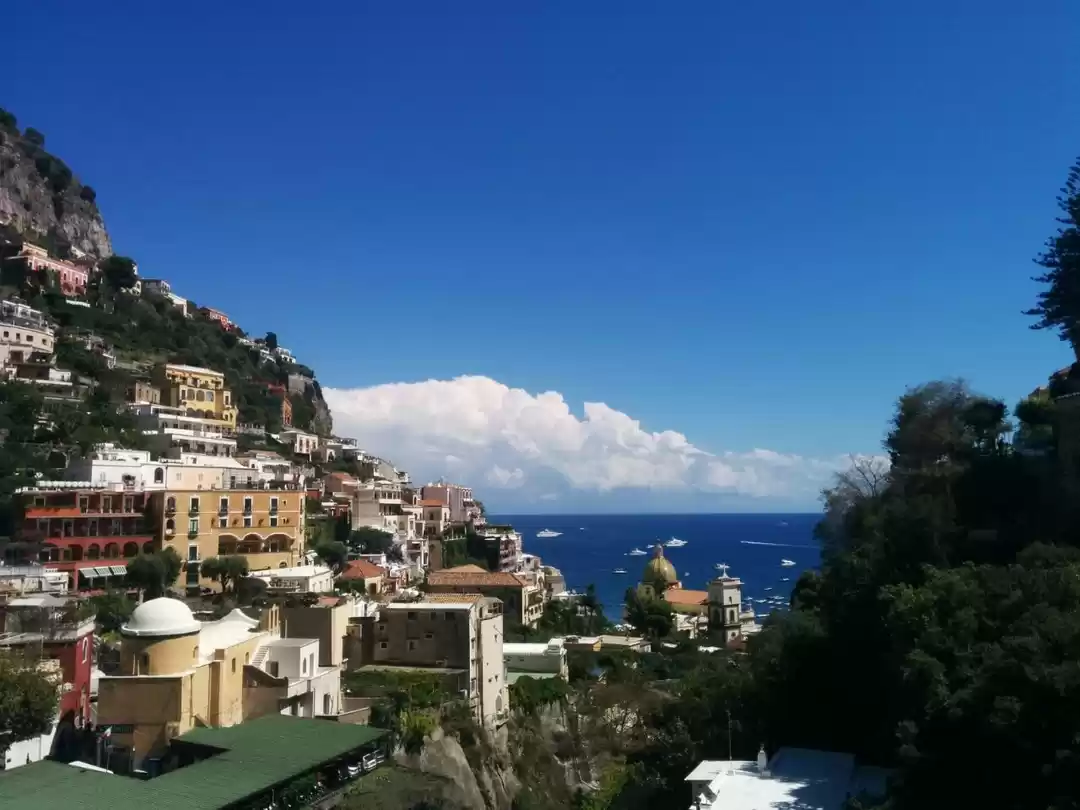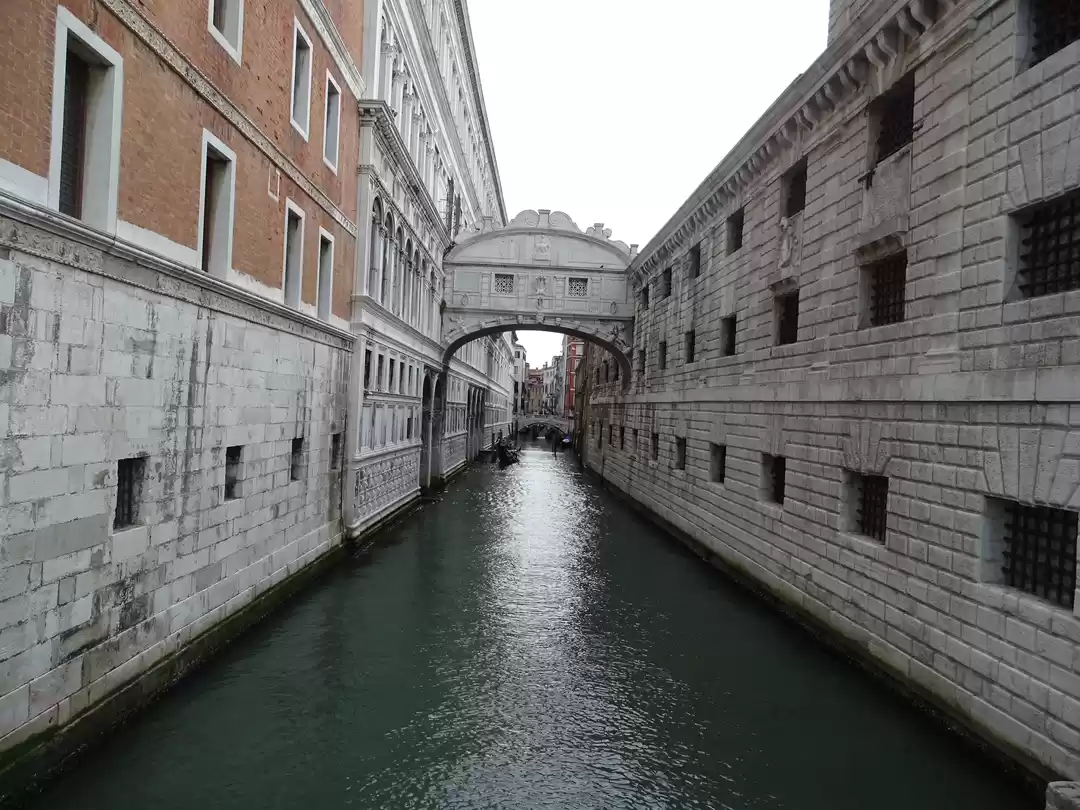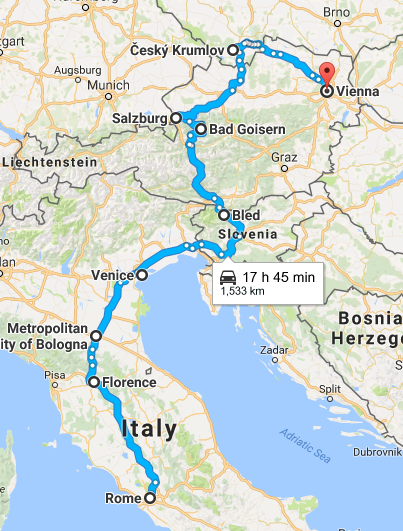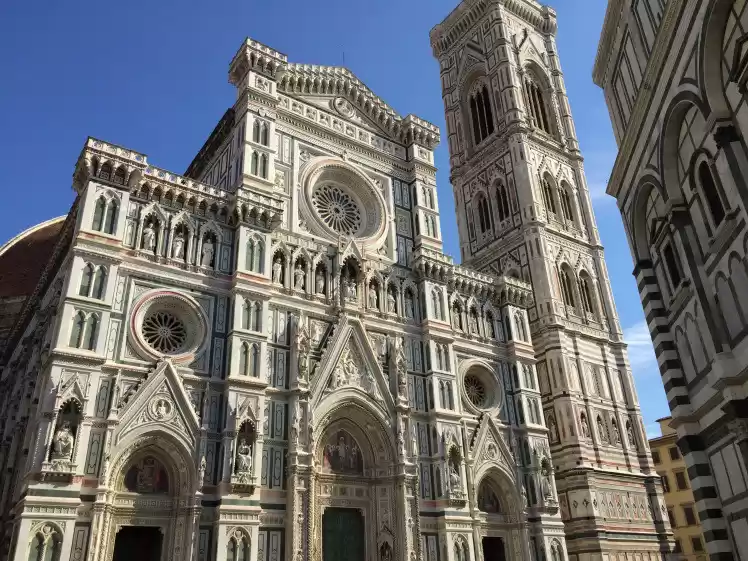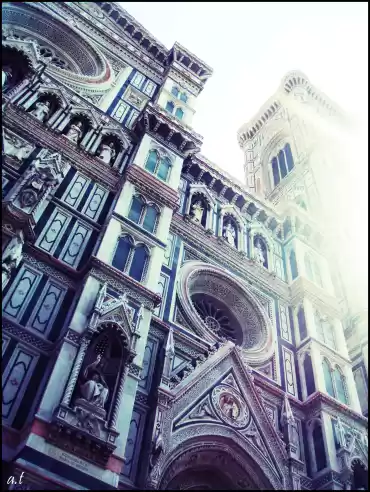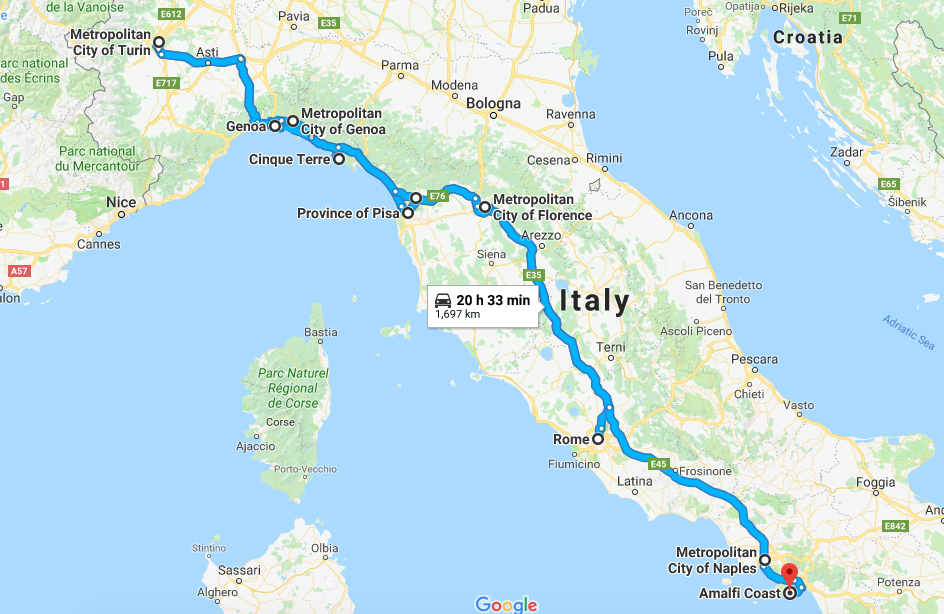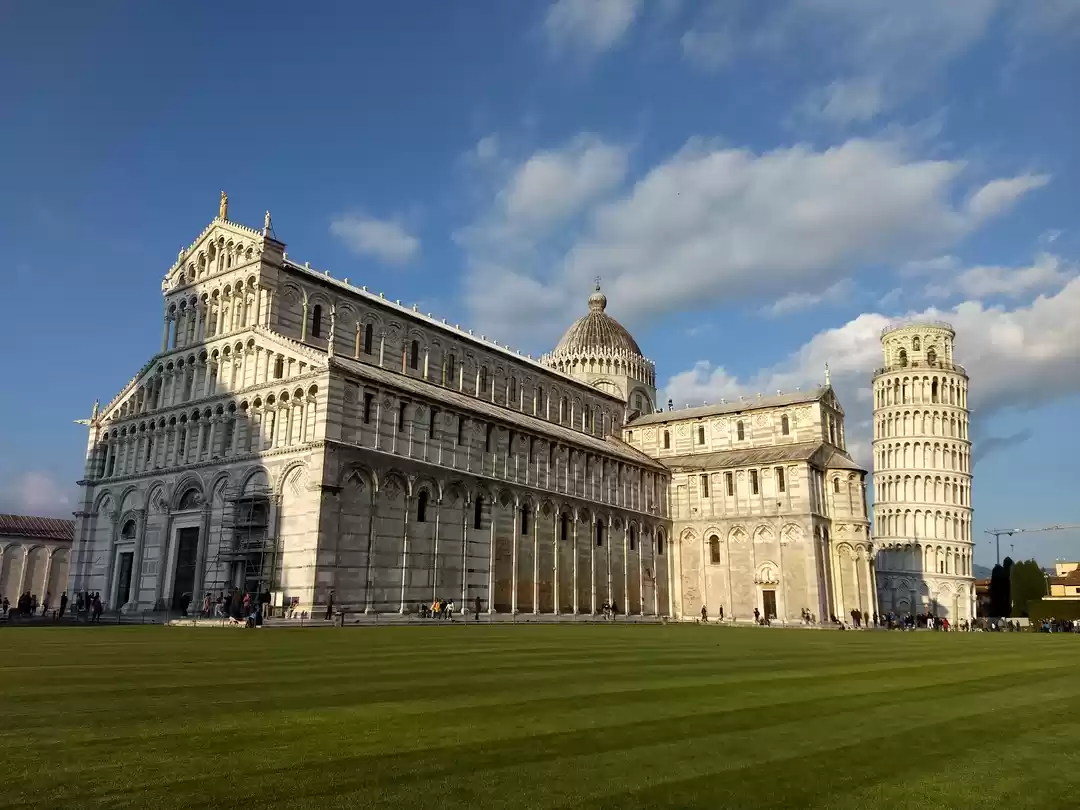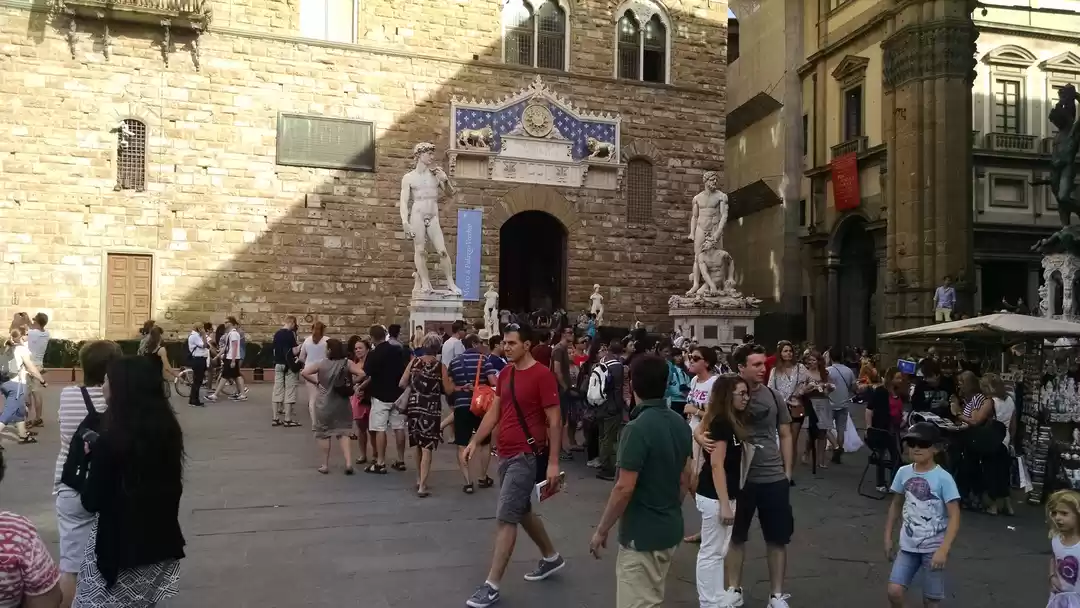
This blog is the third part of an eleven part series where I cover our adventures in Italy. You can click here to read the previous blog which covers our first day in Pisa. Click here to read about our next day in Rome where I accidentally got lost in the Colosseum !
The highlights and structure of the trip are detailed in the first part which can be read here.
00:00 hrs | Arrival in Florence
We arrived in Florence at midnight. Our travel from Pisa took almost 90 minutes. We had our booking at a hostel and had planned to sleep there before starting our day. Unfortunately, the odd time of our arrival was in a no-man's-land zone between the check-in and check-out times of the hostel. Luckily, we had realized this on the bus journey from Rome to Pisa. We decided to hold our existing booking made for 14th April-15th April and spend the early part of 14th April (00:00 hrs to 06:30 hrs) at a round the clock working McDonald's outlet. You might find this choice weird, but it was a trade-off between spending €20 for an extra night at hostel versus €5 for fries at McDonald's.
The McD was a five minute walk from the station. There are three Mcd's in the vicinity of the station and only this one (location is tagged) is open 24hrs. I was unable to convince my travel mates to sleep. They were of the opinion that we will stay awake till our check-in time at the hostel. The night was spent playing games like dumb-charades and more dumb-charades. Hourly doses of fries and coffee kept us awake. The McD had the option of placing orders over a touch screen kiosk and pay by card through the attached machine. The order could then be collected from the service counter.
The store was crowded for most part of the night with different batches of party going people of different age groups stopping by to satiate their munchies. Although McD has a policy against sleeping in their stores, we did spot some weary travelers catching a nap. There was also an enthusiastic person (probably homeless) who was waiting the tables and cleaning up after people left.
Having had a tiring time the day before, we were all in desperate need for sleep. The day in Florence was going to be a busy one with many Renaissance locations lined up as per our itinerary. We also knew that the day had to started early because Florence is frequented by more than 16 million tourists every year. All the places of attraction are crowded year long and have winding lines of tourists waiting to purchase tickets. Express tickets for easier and faster entry are available online, however, they come at a premium price in addition to the internet convenience fee. Being desi tourists, our mantra was to reach places early and beat the crowd.
As the situation was that day, we were not going to catch any sleep at all. We left the McD by 06:00 in the morning and walked the empty streets of Florence towards our hostel. The weather was quite chilly, in contrast to what we had experienced in Rome. Cleaning trucks were on the road, readying the streets of Florence for today's dose of visitors.
Cars are not allowed in the central parts of Florence. The journey to the hostel which was 7km by car was covered in 1km by road. Our hostel was on the other side of Arno river.
06:30 hrs | Santa Monaca Hostel - €20
It was still dark when we reached the hostel. The receptionist was aware that we were coming as we had spoken with him over phone multiple times in the past 24 hrs. The previous day we had inquired if it would be possible for us to keep the luggage and stay in the common room till our check-in time. Even though he wanted to help, he was bound by the regulations of the hostel and asked us to report in the morning as the reception is closed from 23:00 hrs to 06:00 hrs. He was quite amused after learning about our McDonald's hack. I caught an intermittent nap of 30 minutes while we completed the check-in formalities and made small talk with the receptionist about Indian ethnicities and his Tunisian heritage. He informed us that the hostel building was owned by the church, like most prominent and profitable building locations in Italy. The main reason could be that people often left their belongings to the church.
We'd been having breakfast all through the night. With our stomachs stuck in limbo, we decided to delay the actual morning meal to brunch time. At first light, we left the hostel and headed for the first highlight of the day, Galleria dell' Accademia.
Florence
Firenze is the perfect introduction to Italy's famed dolce vita - the easy going way of life (synonymous to Goa's Susegaad). Florence is renowned for its extraordinary treasure trove of world-class art and architecture. The piazzas and palaces reflect the tales of its medieval past. Cradle of the Renaissance and home of Machiavelli, Michelangelo and the Medici, Florence is magnetic, romantic and brilliantly absorbing.
Traveler Introduction
In case you didn't catch our identities from the previous blog, I reintroduce the travelers here.

There are many bridges which connect Florence over the Arno. One among them stands out; Ponte Vecchio, which literally translates to 'old bridge'. And old it is, with its first recorded instance in a document in 996 AD. It was damaged by floods and then rebuilt in the 12th century. It was the only Florentine bridge that was not destroyed by the retreating German forces during WWII. The story goes that this was under express orders of Hitler himself.


The weather that day was particularly chilly with a slight overcast. We took a little detour on our way, hitting Palazzo Pitti (Pitti Palace) on the way before crossing over the iconic Ponte Vecchio.

Ponte Vecchio is also famous for the Corridoio Vasariano (Vasari's corridor) which is a 16th century passage between Palazzo Pitti and Palazzo Vecchio built by Cosimo I de' Medici and Giorgio Vasari. You might remember it from its reference in the famous Dan Brown novel and the corresponding Tom Hanks starrer Inferno. To be frank, most of Florence is referenced in Inferno.




Piazza della Rupubblica is a pedestrianized square lined with elegant cafes. It also features a traditional merry-go-round. The cafes were obviously closed this early in the morning.

08:20 hrs | Galleria dell' Accademia - €12
The gallery opens at 09:00 hrs. The spot at where we joined the entry line was at the edge of the building. What is more amusing is that the line for express ticket holders was also of similar length. The frequency with which people from the two groups are let in is different. It had already started drizzling by the time the Galleria opened. Luckily we were early and got to enter in the first wave.

Moving ahead we caught glimpses of Palazzo Vecchio as well. Few hundred meters ahead we crossed the large open area of Piazza della Repubblica.
We also crossed the Cathedral of Santa Maria del Fiore before finally getting in line at the Galleria dell' Accademia.

Galleria dell' Accademia houses one of the Renaissance's most iconic masterpieces, Michelangelo's David. Michelangelo carved this world famous statue from a single block of marble. His effort is reflected in the life-like appearance of nude boy warrior. The veins in his arms, the muscle on his legs, the slight change in his expression as you walk around the statue are all evidence of Michelangelo's accomplishment.

But lets not jump the gun here. David's naked body is not the first thing that greets you when you enter the Accademia. You enter into a large hall called the Hall of Colossus, decorated with paintings by Andrea Orcagna, Taddeo Gaddi, Domenico Ghirlandaio, Fillippino Lippi and Sandro Botticelli to name a few.






At the center of the hall is the plaster cast model of Jean de Boulogne's famous scuplture Rape of the Sabines. From this model, Giambologna (as Jean de Boulogne is known in Italy) created the marble sculpture which is located in Piazza della Signoria. The cast depicts three figures connected by a serpentine-shaped movement, with one man lifting a woman into the air while a second man crouches. All in all its a pretty graphic scene.



After you are done admiring this exhibition, you enter the adjacent hall called Hall of Prisoners. The hall takes its name from the four unfinished statues of Slaves which were taken up as a project by Michelangelo for the tomb of Pope Julius II. The hall is lined with other incomplete works of Michelangelo and paintings and sculptures by other renowned artists. But they all pale in comparison to the masterpiece that adorns the end of the hallway.
Under a bright skylight which casts a halo like glow around it, stands this 14ft tall marble statute of the biblical hero David. Sculpted by Michelangelo when he was only 26 years of age, it is undoubtedly one of the greatest masterpieces of the Renaissance period.
Giorgio Vasari (who was also the first to use the word Renaissance in print) had penned down his description of this artwork beautifully - “When all was finished, it cannot be denied that this work has carried off the palm from all other statues, modern or ancient, Greek or Latin; no other artwork is equal to it in any respect, with such just proportion, beauty and excellence did Michelangelo finish it”



After admiring the perfection of David up close, we walked left along the walls which were adorned with more art from the Renaissance period. The gallery also features exhibitions of unfinished sculptures and a special museum of musical instrument. We hurried through these collections as we had to meet a very strict schedule to be able to do justice to our one day in Florence. More details about Galleria dell' Accademia, their collections and ticket booking procedures can be obtained from their website accademia.org.





By the time we exited the gallery, the drizzle from morning had evolved into full fledged rain. Only I was equipped with a rainproof jacket. We made a little stop at a shop which sold all items for €1. We bought our brunch meal - a packet of biscuits, an umbrella and a poncho. Three items, €3.
11:00 hrs | Basilica di San Lorenzo
Our next stop as per the itinerary was Basilica di San Lorenzo. This basilica designed by Brunelleschi in 1425 is considered one of the prime examples of Renaissance architecture. It served as the parish church and mausoleum for the Medici family. Unfortunately, the basilica was closed (it was Sunday). We clicked some photos from the outside before heading for Piazza della Signoria.



11:30 hrs | Piazza della Signoria - free
Piazza della Signoria is a giant town square which has been the hub of local life in Florence since the 13th century. Florence's city hall, the Palazzo Vecchio presides over this open area. Visiting the piazza, the attractions around it and entry into parts of the Palazzo Vecchio is absolutely free.

Loggia dei Lanzi
Towards the southern end of the piazza is Loggia dei Lanzi, a 14th century open air gallery which showcases renaissance sculptures including Giambologna's Rape of the Sabines, whose plaster cast we had just seen an hour back at the Galleria dell' Accademia.

Hercules and Cacus
To the right of Palzzo Vecchio's entrance is the statue of Hercules and Cacus sculpted by Florentine artist Baccio Bandinelli. The sculpture is a symbol of physical strength and depicts the victory of demigod Hercules over the fire-belching monster Cacus during his tenth labor for stealing cattle.

Fontana del Nettuno
Towards the north end of the piazza is Fontana del Nettuno - The fountain of Neptune. It is made of marble and bronze. The fountain and the sculptures which in it are a combined work of Baccio Bandinelli, Bartolomeo Ammannati and Giambologna. The edges of the fountain are adorned with brinze satyrs and divinities. The centerpiece of the statue is Neptune in a chariot drawn by sea-horses, symbolizing Florence's command of the Mediterranean.



Palazzo Vecchio
Palazzo Vecchio is the seat of power in Florence. It was designed by Arnolfo di Cambio in the beginning of 14th century for the signoria (city goverment). It is home to the office of Florence's mayor and the municipal council. At the entrance of Palazzo Vecchio, on the other side of the statue of Hercules and Cacus, stands a replica of Michelangelo's David. We did not care to click its pictures in detail as we had already seen the original earlier in the morning.

It was raining with medium force when we reached the piazza. The rain alone was not unbearable, but together with the cold weather it put off the vibe. We were in no mood to let the rain and cold wash over our plans. Geared up with our newly acquired umbrella and poncho, we set off exploring.
Palazzo Vecchio houses a museum and it is also possible to climb its 94m high Torre d'Arnolfo (tower named after Arnolfo di Cambio). However, despite our sticking to the itinerary, even making more time by skipping Basilica di San Lorenzo, we were greeted by long line at the ticket counter. Maybe that's how things are in Florence. With so many tourists pouring in every year, you can choose only one place per day where you can be the first in line. We saw whatever we could without the ticket.


The rain was relentless. It was only noon and we still had two hours to our next planned activity of climbing the revered dome of Cathedral of Santa Maria del Fiore. We chose to wait out the rain in the shade of Loggia dei Lanzi.
Galleria degli Uffizi
Adjacent to Palazzo Vecchio is a gallery which houses the worlds greatest collection of Renaissance art - the Uffizi gallery. The collection which is displayed in chronological order, spans the gamut of art history from ancient Greek sculptures to 18th century Venetian paintings.
Minimum 4 hours are required to peruse the entire gallery. The entry ticket costs €13. We did not have time in our schedule to devote for this experience. Even though we now had 2 hours at hand, one look at the line outside the ticket counter was enough to ward us off. A virtual tour of the gallery can be taken on their website uffizi.it

12:15 hrs | Museo Galileo
Galileo's museum is located just behind the Uffizi gallery on the banks of Arno river. The museum has artifacts from the 15th and 16th century along with scientific instruments and personal items of Galileo Galilei. The collection includes Galileo's telescopes, lens from the telescope with which he discovered Jupiter, terrestrial and celestial globes etc. The entry ticket for the museum was €10. We felt that the price was rather steep and decided to explore their gift shop for lookalike items of their collection instead. You can read more about the museum on their website museogalileo.it




12:45 hrs | Piazza del Duomo - €18
You might be thinking, Piazza del Duomo ? Isn't that the place from Pisa ? (read the Pisa blog here). Well, this is a different piazza in a different city. Piazza del Duomo literally translates to cathedral square. The Piazza del Duomo of Florence spans the Cathedral of Santa Maria del Fiore, the Campanile (bell tower), the Battistero (baptistery) and the Grande Museo del Duomo (cathedral museum). Entry into the cathedral is free. Tickets are required for climbing up the Cupola (dome) and Campanile of the cathedral and the museum.
The ticket for climbing the dome has to be pre-booked. Due to the importance of this aged structure, only a restricted number of people are allowed up at a time. If climbing this fabled dome is in your bucket-list, better pre-book a slot months in advance as the chance of getting the opportunity after reaching Florence is very very slim. We had actually chosen that particular day for Florence because an afternoon slot was available only for Sunday. The pre-booked ticket included entry into the museum and the bell tower. The tickets can be booked online using their website museumflorence.com
Our slot to climb the duomo was scheduled at 14:00 hrs. We used the one hour available at hand visiting the baptistery and the museum.
Florence requires at least three days to cover, as is evident by the 72 hour validity of the Firenzecard. We had tailored our trip to one day, strategically hitting the prime locations. However, the planning had not worked out well as Basilica di San Lorenzo was closed and Palazzo Vecchio had a long waiting line. We decided to move up the places of interest that we had sidelined while preparing our final list of to-visit attractions in Florence. The most viable of them in the current scenario was Museo Galileo.
By this time the rain had stopped. We walked almost 1km towards Piazza del Duomo, reaching more than an hour early for our next activity.
14:15 hrs | Cupola del Brunelleschi
One of the finest masterpieces of Renaissance architecture, the cupola crowning the Duomo is a feat of engineering. Taking inspiration from the Pantheon in Rome, Brunelleschi designed the cupola using an innovative solution wherein a distinctive octagonal shape of inner and outer concentric domes rest on the drum of the cathedral rather than the roof. His unique approach allowed artisans to build from the ground up without needing a wooden support frame. More details on the architectural aspects are available here.
Climbing the relatively steep spiral staircase is a thrilling experience. The dome is 91m high and 46m wide. After a long spiraling climb we reached the balustrade at the base of the dome. The narrow balcony spans the entire circumference of the dome. From here you can get an aerial view of the octagonal choir of the cathedral below. Just under the eye level are seven round stained-glass windows which pan the octagon of the cathedrals drum. These were painted by Donatello, Andrea del Castagno, Paolo Uccello and Lorenzi Ghiberti.


Campanile di Giotto
Even though our ticket allowed us entry into the Campanile, we decided against that climb as were were already tired from scaling the cupola which had offered similar views from its top.


13:15 hrs | Battistero di San Giovanni
This Romanesque baptistery, built in the 11th century, is one of the oldest buildings in Florence. It consists of an orthogonal striped structure of white and green marble with three sets of paneled doors at the north, south and east entrances. The carvings on the doors tell the story of humanity and redemption . The doors currently at the baptistery are copies, the original are placed in the adjacent museum building. The mosaic ceiling which crowns the baptistery portrays many stories from the Bible including the last judgement and stories from the Book of Genesis. The Italian poet Dante Alighieri (you might remember him from Inferno) was baptized in this baptistery.






13:45 | Grande Museo del Duomo
This impressive museum safeguards artifacts from the cathedral, baptistery and bell tower. The collection includes the original doors at the entrance of the baptistery. Most notable of which is the Porta del Paradiso (Gates of Paradise). It took Lorenzo Ghiberti 21 years to complete these gilded bronze doors. The doors consist of 28 panels depicting life of Christ from the New testament.


15:30 hrs | Cathedral of Santa Maria del Fiore
The cathedral has a breathtakingly pretty pink, white and green facade. With the campanile gracefully complementing it, the cathedral and the surrounding piazza dominate the medieval city-scape of Florence. Most of the artistic treasures of the cathedral have been removed over the years and distributed among museums.



The highlights at the museum also includes Michelangelo's La Pietà, a work he sculpted when he was almost 80 and intended for his own tomb. We also spotted a sculpture of Mary Magdalene by Donatello and the death mask of Brunelleschi. A virtual tour of the museum is available on their website museumflorence.com/museum



From the second floor of the museum, we caught a glimpse of the cupola of the cathedral where we were headed next.

16:45 hrs | Pazzi Chapel
The basilica and the adjoining gardens of the Pazzi Chapel are also the burial grounds of many illustrious Italians such as Michelangelo, Galileo, Ghiberti, and Machiavelli. Memorials for other famous Florentines such as Dante Alighieri, Florence Nightingale, Guglielmo Marconi (inventor of radio) and Enrico Fermi (nuclear physicist) are also established here.







17:15 hrs | Friars Minor Conventual
After walking through the tombs we exited into the lawns of the Friars Minor convent. It had been a long day, and we had survived only on one packet of biscuits. Sleep had somehow evaded us for 26 hours, and now it had started to catch up. We tried to get a coffee from the vending machine and failed. The machine gobbled up our €1 coin and gave us nothing in return.

16:00 hrs | Basilica di Santa Croce - €8
The weather had turned again and a slight drizzle had started by the time we reached Santa Croce. The dampness of the ground combined with the waning sunlight had made the atmosphere very cold. The entry ticket to the basilica includes entry into the adjacent Pazzi Chapel and convent.

18:00 hrs | Santa Monaca Hostel
Back at the hostel, we collected our luggage from the storage room and were shown into the dorm. This was the craziest dorm I had ever been to. Standard hostel dorms are six, eight or ten beds max. This mixed dorm had 18 beds. And majority were occupied. After a quick shower, we retreated to our beds, hoping that our wet shoes dry by morning. The morning seemed to have come early, we were packed and ready to leave by 05:15 hrs.


05:15 hrs | Ponte Santa Trinita
On our way to the station, we crossed the 16th century arched bridge of St Trinity and caught a full view of Ponte Vecchio from here.


05:45 hrs | Train to Rome - €12
At dot 05:45 hrs we boarded our Trenitalia train to Rome. We had booked the tickets through the GoEuro (now Omio) app. All our travel tickets were pre-booked as part of finalizing the itinerary.
I hope you enjoyed this account of our experience in Florence. The adventures in Rome are covered in the next blog. Click here to read about the Day 3 adventures and how I got lost in the Colosseum.
Follow me on Tripoto for more itineraries of exciting adventures. Connect on Strava to follow my running, riding and calisthenics activities. Find me on Instagram and Facebook for any queries or help required with planning your next adventure.
Until next time.
Expenditure Estimate
This day started in Florence. The cost of travel from Pisa to Florence is included in the previous blog. A detailed breakdown of the expenses per person is given below.
a) €21 for travel: €9 (train from Pisa to Florence)* + €12 (train from Florence to Rome)
b) €20 for lodging: Night stay at hostel
c) €9 for food: €5 (McD) + €1 (biscuits) + €3 (panini)
d) €38 for entry tickets: €12 (Galleria dell' Accademia) + €18 (sights in Piazza dell Duomo) + €8 (Santa Croce)
Unplanned expense of €2 for purchasing umbrella and poncho.
*Cost of train from Pisa to Florence in already included in the previous blog. I have added it here for the sake of completeness.
Our total expenditure in Florence came to around €80 per person. The expenditure breakdown does not include purchase of souvenirs.
Firenzecard
The Firenzecard or the Florence Card is a city pass for Florence. It costs €85 and is valid for 72 hours after first use. The card covers admission to some museums, villas and gardens as well as unlimited use public transport and free wifi access across the city. It saves time as most museums have separate queues for card holders. The downside of the card is that only one free admission is allowed per museum and at least eight museums have to be covered to justify its cost. The card can be purchased online or at specific locations in Florence. You can learn more about the card at their website firenzecard.it
Since our visit was only for one day and our itinerary did not cover as many museums, we opted against purchasing the card. However, considering the time available and budget, the reader can definitely do an assessment if the Firenzecard is helpful.
If you look above, you will see the flamboyant 16th century frescoes painted by Giorgio Vasari and Fedrico Zuccari. The fresco is a rendition of a very famous biblical scene, Giudizo universale - Last Judgement. The paintings are done in such detail that the life-size characters appear to jump out of the fresco.
An earlier and more famous version of this scene by Michelangelo is painted on the ceiling of Sistine Chapel in Vatican. Read the blog on our Vatican visit here.





From this level, the spiral staircase ends and a near vertical climb along the curve of the inner dome takes you to the upper reach of the Duomo, where a panoramic view of Florence greets your eyes.



By the grace of Jupiter (the Roman God, not the planet), the skies had cleared and had an unobstructed 360 degree view of Florence. At 91m tall, The dome is the tallest structure in Florence. It allowed for a birds eye view of the entire city, enabling us to spot all the places that were on as well as off our one itinerary for this day. Standing here gives a very Assassin Creed type of vibe.










On the way down is a small make-shift museum that displays the tools and mechanical assemblies used during construction of the dome. There is also a digital system through which you can virtually sign on a selection of the fresco which decorates the dome. We found this to be a very healthy practice as it discourages people from vandalizing the interior walls of the dome.



The stairs lead to an exit point which is within the cathedral, however, you have to exit here and then enter from a separate entry to visit the other sections of the cathedral. The long queue at that entry deterred us and we decided to catch a quick glimpse from where we were before leaving the premises.
After admiring the architecture of the cathedral for some more time, we proceeded towards our last place attraction for the day.
This basilica is the largest Franciscan church in the world. Its most notable features are its sixteen chapels, many of them decorated with frescoes by Giotto. Legend says that Santa Croce was founded by St Francis himself.


The sky had started to clear again. We had now seen everything as per our itinerary. It was now time to head back to the hostel and get some rest before catching our early morning train to Rome (click here to read about our day in Rome).
On the way back to the hostel I grabbed a bite of prosciutto panini (ham sandwich) at a local eatery. I was too tired and too hungry to savor the taste but I recall it being sufficiently heavy to have served as dinner.
05:30 hrs | Basilica di Santa Maria Novella
Near the station, we also caught a glimpse of the exterior of the cathedral of Santa Maria Novella. It is the first great basilica of Florence and also the city's principal Dominican church. We could make out the striking green and white marble facade of the 13th century cathedral even in the glow of the street lights. The interior of the basilica is decorated with Masaccio's superb fresco of the Holy Trinity. The two marble obelisks in the front of the cathedral were sculpted by Giambologna.






